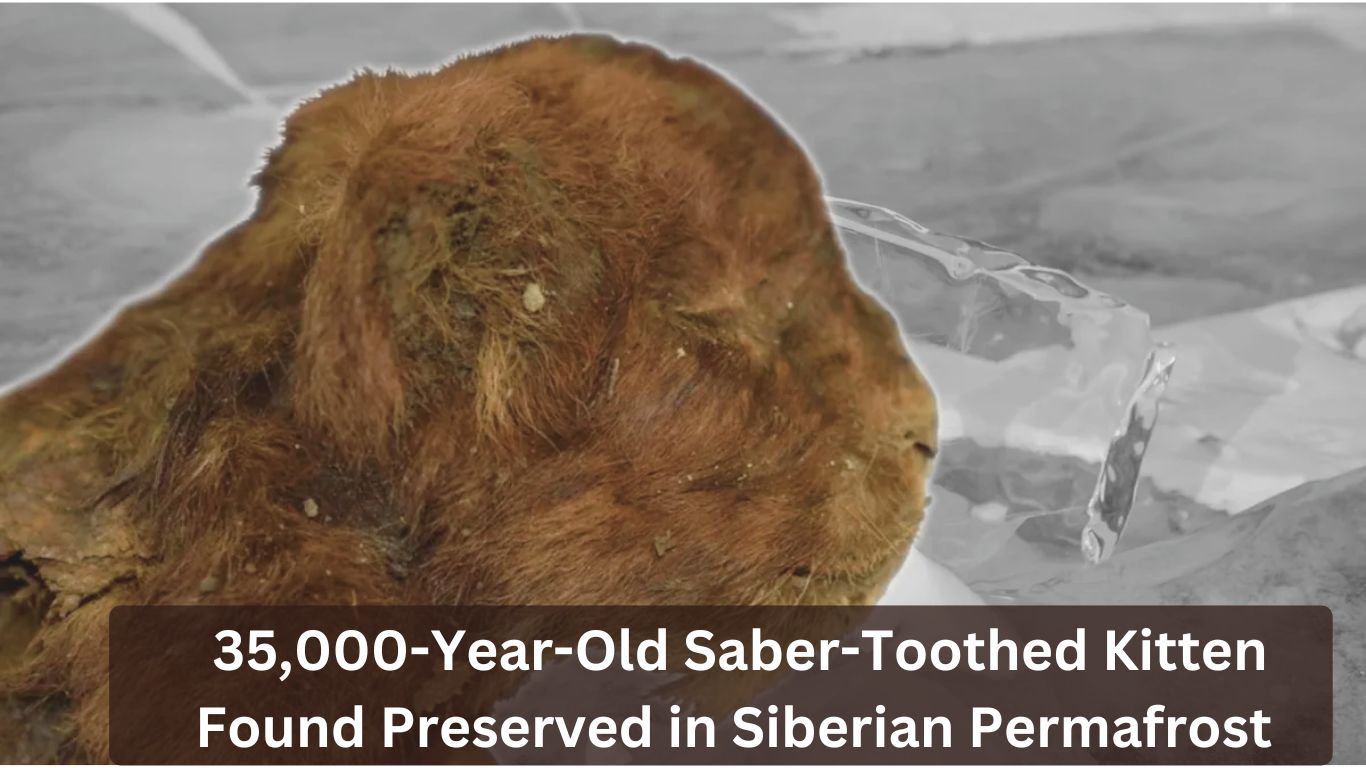In a groundbreaking discovery, scientists have unearthed a remarkably well-preserved, mummified saber-toothed kitten from Siberia’s permafrost. Found in Russia’s northeastern Sakha Republic, the cub is estimated to be 35,000 years old, making it the first of its kind ever discovered. The findings, published in the journal Scientific Reports, provide an unprecedented look at an extinct mammal species that has no living counterparts.
A Remarkable Specimen
The mummified cub was determined to be just 3 weeks old when it died. Its cause of death remains a mystery, but the exceptional preservation of its body offers researchers a unique glimpse into its physical characteristics.
Physical Description:
- Fur: The kitten’s short, thick, and soft fur measures about 20 to 30 millimeters in length. Its dark brown coat has been impeccably preserved, offering insights into its appearance.
- Condition: The cub’s mummified state has retained its hair, skin, and other soft tissues, an extraordinary level of preservation for a specimen this old.
The authors of the study noted, “For the first time in the history of paleontology, the appearance of an extinct mammal that has no analogues in the modern fauna has been studied.”
Context of the Discovery
The permafrost of Siberia has long been a treasure trove for paleontologists, yielding numerous well-preserved specimens of prehistoric animals over the years. Other discoveries from the region include woolly rhinoceroses, mammoths, wolves, cave lions, and ancient birds. These findings provide invaluable insights into the ecosystems that thrived during the last Ice Age.
The saber-toothed kitten is particularly unique, as its species does not have a direct counterpart in today’s fauna. Its discovery sheds light on the diversity of prehistoric predators and raises intriguing questions about their evolution and extinction.
Implications for Paleontology
The preservation of the saber-toothed kitten opens new doors for research. Its soft tissues could provide DNA and protein samples, enabling scientists to study its genetic makeup and compare it with other extinct and modern species. This might also help uncover how these ancient predators adapted to their harsh environments.
The discovery also fuels speculation about the potential of finding extinct human species preserved in permafrost. Since Neanderthals and Denisovans inhabited Eurasia during the Ice Age, it is not far-fetched to imagine that future excavations might unearth similarly well-preserved specimens of early human relatives.
Conclusion
The mummified saber-toothed kitten from Siberia’s permafrost stands as a testament to the wonders of natural preservation. Its discovery marks a significant milestone in paleontology, offering a rare opportunity to study an extinct species in stunning detail. As researchers continue to uncover the secrets hidden within the permafrost, one can only imagine the extraordinary insights still waiting to be revealed, perhaps even about ancient human species.
This remarkable find reinforces the importance of exploring and protecting these icy time capsules of Earth’s history.















